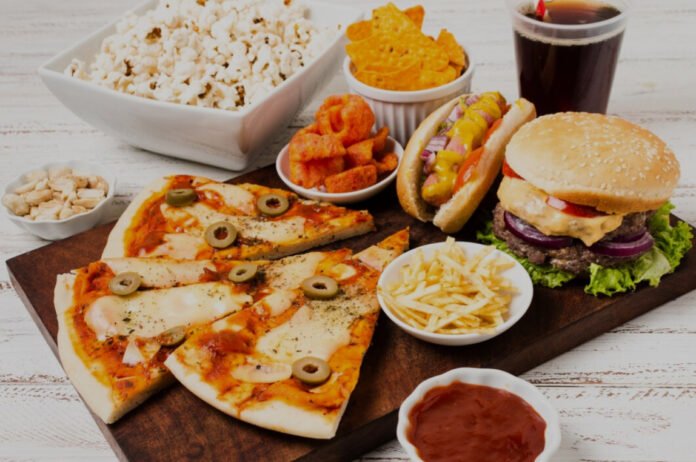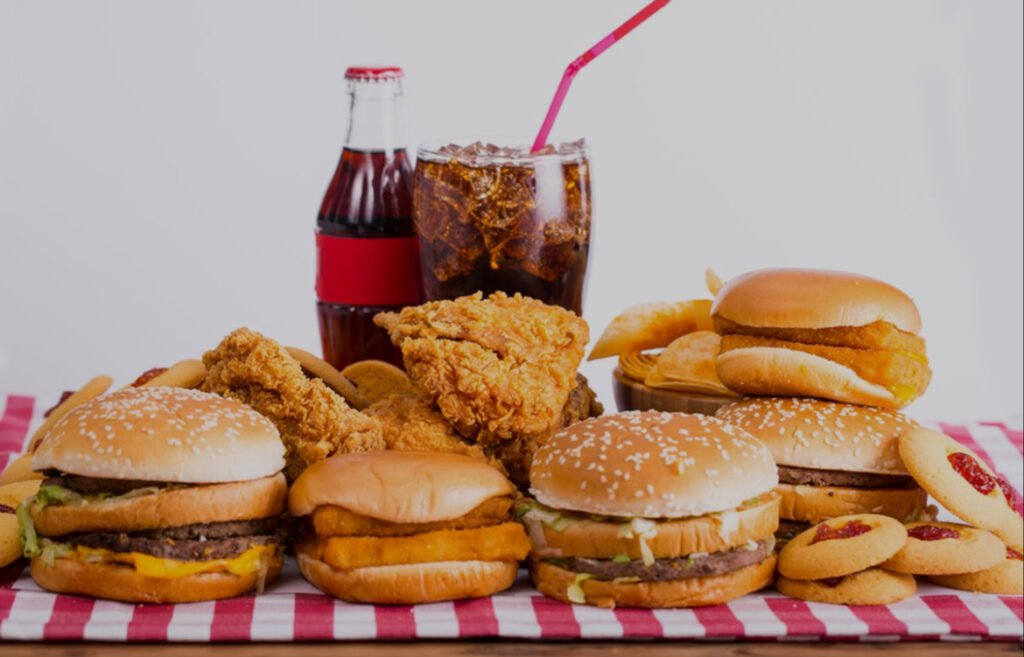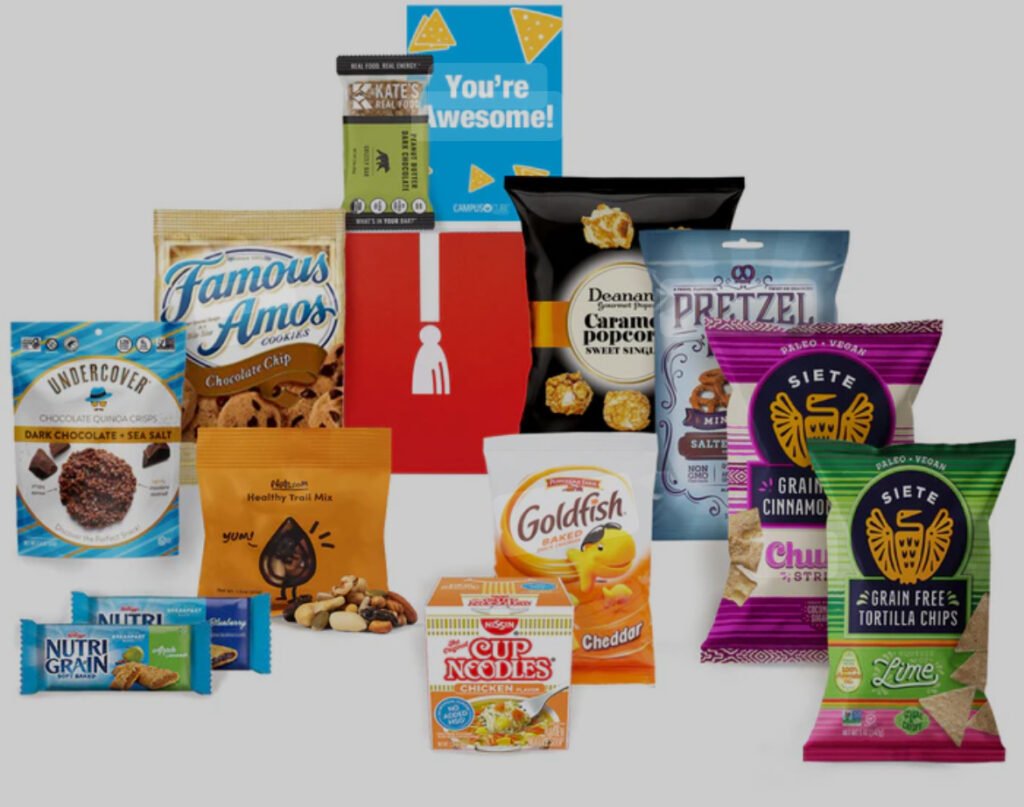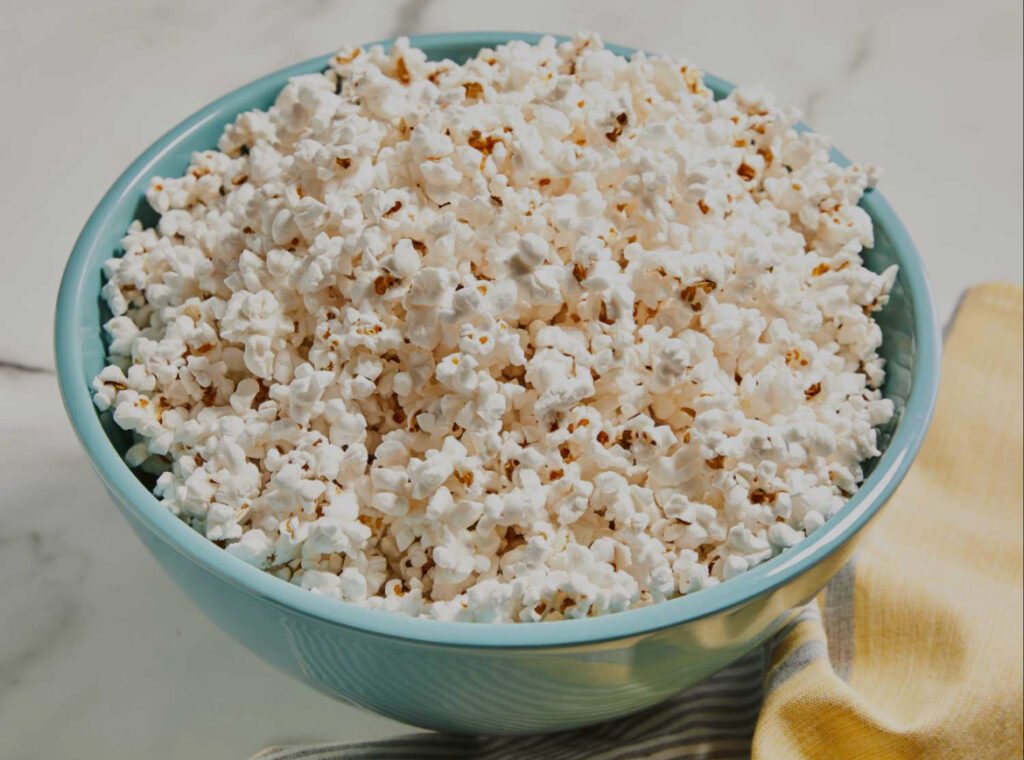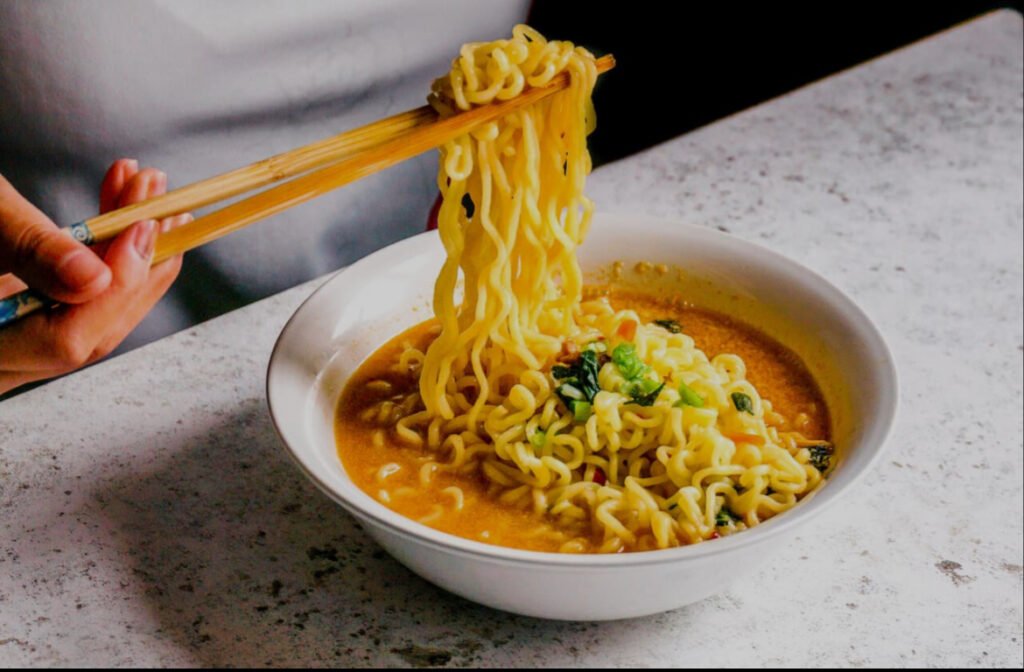Introduction
Let’s face it: processed foods are everywhere. They’re in our breakfasts, our snacks, our lunchboxes, and even our midnight cravings. They’re convenient, cheap, and tasty — but they also come with a dark side. Many processed foods are packed with added sugars, artificial chemicals, unhealthy fats, and preservatives that chip away at your health one bite at a time.
While not all processed foods are evil (frozen veggies and canned beans can be lifesavers), some are so loaded with harmful ingredients and artificial additives that cutting them out could be one of the best decisions you make for your body, mind, and future.
In this article, we’ll break down five of the most harmful processed foods that nutrition experts recommend eliminating right away. We’ll dive into why they’re dangerous, how they’re made, and what you can eat instead to fuel your body with energy, clarity, and vitality.
Sugary Breakfast Cereals: A Sweet Trap to Start the Day
Sugary breakfast cereals may be marketed as a “healthy” way to start your day, but they’re really just glorified dessert in disguise. Brands boasting “whole grain” or “fortified with vitamins” are often loaded with added sugars, artificial colors, preservatives, and refined grains.
What’s Really in the Box?
The main ingredient in these cereals is often refined flour or corn, which has been stripped of fiber and essential nutrients during processing. These refined grains cause blood sugar to spike rapidly, leading to a crash that leaves you hungry again within an hour. That’s why many sugary cereals fall squarely into the category of processed foods — they offer quick energy with almost no lasting nutritional value.
To enhance taste, texture, and shelf life, manufacturers add sugar (often hidden under names like malt syrup, dextrose, or high-fructose corn syrup), synthetic flavors, and artificial colors. These additives contribute to cravings and make the food more addictive without offering real nourishment.
The same thing happens in flavored instant oatmeal packets, which may seem healthy but are actually processed foodspacked with added sugars and preservatives. Similarly, breakfast bars marketed as “whole grain” often contain minimal fiber and are loaded with sweeteners and processed oil blends to preserve texture — another example of how processed foods disguise themselves as health foods.
These breakfast options may be convenient, but their high level of processing, sugar content, and lack of real nutrition can have long-term consequences for your metabolism, weight, and overall energy.
How It’s Made
- Refining: Whole grains are milled to remove the bran and germ, which contain most of the nutrients.
- Extrusion: High heat and pressure shape and puff the grains, destroying many natural enzymes and vitamins.
- Coating: Cereals are often sprayed with sugar syrups, artificial flavoring agents, and synthetic vitamins to appear healthy on labels.
- Why It’s Harmful
Sugary cereals can lead to insulin resistance, metabolic syndrome, and increased risk of obesity, especially in children. They offer a quick dopamine hit but leave your body nutritionally empty.
Healthy Swap
Choose steel-cut oats, chia pudding, or unsweetened muesli with fruit and nuts. These options provide fiber, healthy fats, and long-lasting energy without the sugar crash.
Packaged Snack Cakes & Pastries: Shelf-Stable But Health-Damaging
Those plastic-wrapped snack cakes and toaster pastries might be tasty treats, but they’re also some of the most chemically altered processed foods on the planet. These treats are built to last months on the shelf, which means they’re engineered with ingredients that your body doesn’t recognize as food.
What’s Lurking Inside?
Packaged pastries are usually made with refined flour, trans fats (hydrogenated oils), high-fructose corn syrup, and synthetic preservatives like BHA and BHT — all of which are linked to inflammation and disease.
How It is Made
- Hydrogenation: Oils are chemically altered to become solid at room temperature, improving texture and shelf life but creating harmful trans fats.
- Stabilizers and Fillers: These keep pastries soft and prevent spoilage, even after months on the shelf.
- Artificial Flavor & Color: Synthetic chemicals mimic flavors and colors found in real foods but can disrupt hormones and liver function.
Why It’s Harmful
Consuming these products regularly has been linked to heart disease, type 2 diabetes, weight gain, and even liver damage. Trans fats, especially, are known to increase bad cholesterol (LDL) and lower good cholesterol (HDL), making them a cardiovascular time bomb. This is why snack cakes and pastries fall into the most dangerous category of processed foods — they’re engineered for long shelf life, not health.
But it’s not just snack cakes. Frozen toaster pastries, often marketed to kids, are packed with the same harmful combination of refined flour, trans fats, and sugar. So are packaged donuts, which are deep-fried, shelf-stabilized, and loaded with artificial flavoring. Even creamer-filled cookies — a common pantry staple — contain a mix of hydrogenated oils and emulsifiers that classify them as ultra-processed and detrimental to heart health.
These types of processed foods not only lack nutritional value, but their constant consumption contributes to inflammation, blood sugar imbalances, and an increased risk of chronic illness. If left unchecked, these effects can quietly escalate into serious long-term health issues.
Healthy Swap
Try homemade muffins using almond flour, mashed bananas, and dark chocolate chips, or snack on Greek yogurt with berries. You’ll satisfy your sweet tooth with whole ingredients your body can actually use.
Processed Deli Meats: Convenience with a Side of Chemicals
Sliced ham, turkey, salami, and roast beef from the deli counter might seem like easy lunch solutions, but they’re also linked to some of the most serious chronic health conditions — including cancer.
What Makes Them Processed?
Deli meats are heavily processed through curing, smoking, or chemical preservation. These techniques preserve color and extend shelf life but introduce a host of problematic additives — most notably nitrates and nitrites, which convert into carcinogenic nitrosamines in the body.
How It’s Made
Chemical Curing: Many types of deli meat qualify as processed food because they are chemically cured with sodium nitrite or sodium nitrate. These additives prevent spoilage and preserve the pinkish color of meats like ham, bacon, and salami. However, during digestion, they can form harmful byproducts called nitrosamines, which are strongly linked to cancer.
Injection: In the effort to maximize profit and shelf appeal, some manufacturers inject the meat with water, sodium, sugar, starch, and fillers. This process makes the product heavier and seemingly more flavorful but lowers its nutritional quality. It also significantly increases the salt content — a hallmark of many types of processed food.
Preservation: To give deli meat a longer shelf life, companies add preservatives, MSG, and artificial flavor compounds. These synthetic additives make the meat more appealing and addictive, but they strip away any resemblance to real, wholesome food — pushing it deeper into the category of processed food.
Why It’s Harmful
Eating processed food like deli meats on a regular basis has been directly linked to serious health risks, including colorectal cancer, high blood pressure, and an increased chance of stroke. In fact, the World Health Organization has classified processed food in the form of cured meats as a Group 1 carcinogen — placing it in the same risk category as smoking tobacco.
Over time, the heavy use of sodium, preservatives, and artificial flavor enhancers can lead to inflammation, hormone disruption, and metabolic imbalance. These ingredients may extend the product’s shelf life, but they shorten your healthspan — especially when consumed as part of a regular diet filled with processed food.
Healthy Swap
Instead of relying on processed food like deli slices, choose real, nutrient-rich options. Roast your own chicken or turkey breast, grill wild-caught salmon, or try plant-based proteins made from whole ingredients like chickpeas, lentils, or tofu. These options align with a clean eating lifestyle and help you avoid the chemical burden that comes with overly processed meals.
Prepping proteins in advance means you’ll still have the convenience of quick meals — but without the dangerous trade-offs that come with processed food.
Microwave Popcorn (with Butter Flavor): The Toxic Pop Snack
Microwave popcorn might feel like the ultimate movie snack, but under that buttery smell lies a range of industrial chemicals that have raised major red flags for health researchers.
The Hidden Danger
While popcorn itself is a whole grain, the bag lining, flavoring chemicals, and oil stabilizers are where the danger lies. The most notorious is diacetyl, a chemical used to create artificial butter flavor that has been linked to lung disease in factory workers.
How It’s Made
Chemical-Lined Bags: Many microwave popcorn bags are considered processed foods because they’re coated with synthetic substances to resist grease. These coatings often include perfluorinated compounds (PFCs), which can break down into harmful substances like PFOA when heated.
Flavor Engineering: The buttery taste in microwave popcorn doesn’t come from real butter. It’s created through a lab process involving volatile flavor chemicals like diacetyl. This level of chemical manipulation is what makes microwave popcorn a highly engineered example of processed foods.
Stabilizers: To maintain shelf stability and prevent the fats from going rancid, manufacturers add preservatives. These ingredients are another layer of what classifies popcorn as part of the processed foods category — full of ingredients designed for preservation, not nutrition.
Why It’s Harmful
Even occasional exposure to the additives and chemicals found in these kinds of processed foods can add up over time. Studies have linked the inhalation of steam from butter-flavored popcorn to respiratory damage, and the packaging itself can contribute to hormone imbalance and other long-term health risks. These concerns show how some processed foodsgo far beyond added salt or sugar — they’re built from chemicals your body doesn’t recognize.
Healthy Swap
Pop your own kernels using a stovetop or air popper and season them with real, whole ingredients like avocado oil, grass-fed butter, or nutritional yeast. This way, you skip the harmful parts of processed foods and still enjoy a crunchy, delicious snack that fuels your body the right way.Pop your own kernels using a stovetop or air popper and drizzle with avocado oil, grass-fed butter, or season with nutritional yeast, paprika, or sea salt for a clean, delicious crunch.
Instant Noodles and Ramen: A Sodium-Filled Trap in a Cup
Instant noodles are a college dorm staple, but convenience comes at a high cost to your health. These quick-prep meals are packed with refined carbohydrates, preservatives, flavor enhancers, and an excessive amount of sodium.
What’s Inside That Cup?
Each packet often contains MSG, artificial meat flavor, and preservatives like TBHQ (tertiary butylhydroquinone), a petroleum byproduct used to extend shelf life. The noodles themselves are flash-fried in palm oil, creating unhealthy fats that promote inflammation.
How It’s Made
- Deep Frying: Noodles are pre-cooked by frying in oil, then dehydrated and sealed.
- Flavor Sachets: The powder packet contains artificial beef/chicken flavor, salt, MSG, sugar, and anti-caking agents.
- Preservatives: TBHQ helps the product last up to a year but has been shown to affect immune system function in lab tests.
- Why It’s Harmful
Just one serving can exceed your daily recommended sodium intake, raising your risk for hypertension, stroke, and kidney problems. TBHQ and MSG are linked to digestive issues, headaches, and possible long-term neurological effects.
Healthy Swap
Make a homemade noodle bowl using rice noodles, vegetable broth, fresh herbs, and lean proteins like tofu, tempeh, or chicken. You’ll get the comfort without the chemicals.
Final Thoughts: Swap Smart, Live Better
Cutting out processed food doesn’t mean giving up your favorite meals — it means making thoughtful upgrades that support your body and your long-term health. Every meal is a chance to choose better. And the truth is, you don’t need a strict diet or an extreme cleanse to get results — just a few smart shifts in your daily routine.
Start with one small change. Maybe you swap that sugary cereal for steel-cut oats. Or maybe you replace deli meats with fresh, roasted chicken. Each small step away from processed food is a step toward a healthy lifestyle. Over time, those changes add up — giving you better energy, deeper sleep, clearer skin, and fewer digestive issues.
Your taste buds can and will adjust. Many people find that once they start eating nutrient-dense foods, overly salty or sugary snacks begin to taste artificial — even unpleasant. That’s the power of fueling your body with real, whole ingredients.
Clean eating doesn’t mean perfection. You don’t have to give up birthday cake or the occasional vacation indulgence. But when your everyday meals are based on nourishing, natural foods, your body stays in balance — even when life gets a little messy.
So be intentional. Read labels. Cook more often. Stock your pantry with foods that energize you, not weigh you down. You deserve to feel great — not just now and then, but every single day.
If you’re ready to take control of your health, start with just one change: remove a single processed food from your diet and replace it with something fresh and wholesome. That one small decision could be the start of a stronger,


